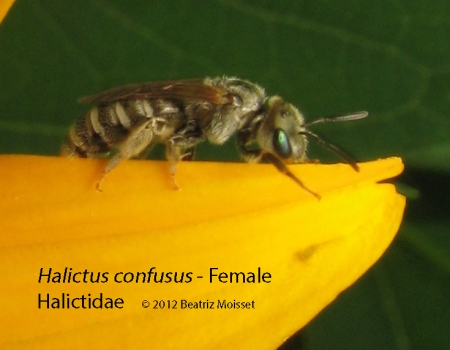Paper wasps or paper nest wasps are large and noticeable, long legged, brown, reddish or nearly black with yellow markings not as pronounced as those of hornets and yellowjackets. Like them, they fold their wings lengthwise when not flying. They build their nests, attached by a stalk to a surface, with paper made by scraping plant fibers, softening them with saliva and chewing them up. These nests are considerably smaller than those of hornets and yellow jackets.
The Northern Paper Wasp is brown or nearly black, with distinctive large round spots on the sides of the abdomen in addition to the other markings. It is found in eastern and central North America but not in the west.
An introduced species, the European Paper Wasp, has become common and widespread throughout the continent. It presents a stronger pattern than that of the Northern Paper Wasp, mostly black with contrasting white or pale yellow markings.
Both species visit flowers frequently to drink nectar and may do some pollination. They hunt insects which they feed to their young.
Habitat: Fields, meadows, forested areas.
Season: March to November, year round in southern states. Most frequent between July and September.
Flowers: milkweed, Queen Anne’s Lace, many members of the aster family like snakeroot, tansy and goldenrod.















































